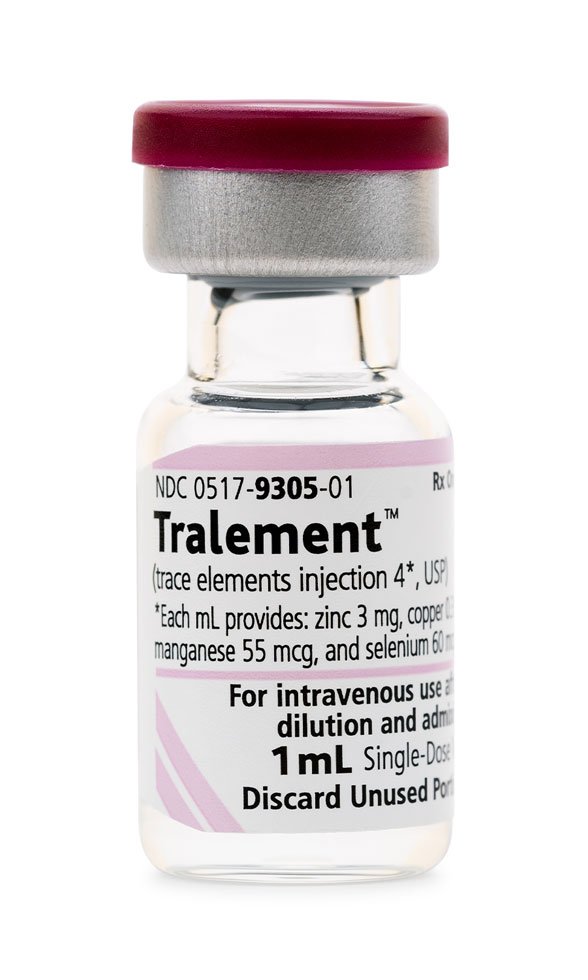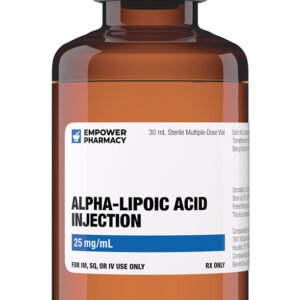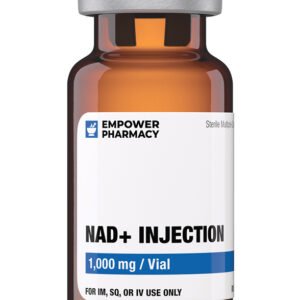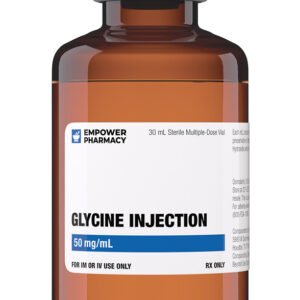Description
General Information
Tralement (TRACE ELEMENTS INJECTION 4, USP) is a sterile nonpyrogenic solution containing four Trace Elements for use as an additive for Total Parenteral Nutrition (TPN).
Each mL Contains: Zinc Sulfate Heptahydrate (equivalent to 3 mg Zinc); Cupric Sulfate Pentahydrate (equivalent to 0.3 mg Copper); Manganese Sulfate Monohydrate (equivalent to 55 mcg Manganese); Selenious Acid (equivalent to 60 mcg Selenium); and Water for Injection q.s. pH of the solution may have been adjusted with Sulfuric Acid.
Clinical Pharmacology
ZINC has been identified as a cofactor for over 70 different enzymes, including alkaline phosphatase, lactic dehydrogenase and both RNA and DNA polymerase. Zinc facilitates wound healing, helps maintain normal growth rates, normal skin hydration and senses of taste and smell.
Providing zinc during TPN prevents development of the following deficiency symptoms: Parakeratosis, hypogeusia, anorexia, dysosmia, geophagia, hypogonadism, growth retardation and hepatosplenomegaly. At plasma levels below 20mcg zinc/100mL, dermatitis followed by alopecia has been reported for TPN patients.
COPPER is essential as a cofactor for serum ceruloplasmin, an oxidase necessary for proper formation of the iron carrier protein, transferrin. Copper also helps maintain normal rates of red and white blood cell formation. Scorbutic type bone changes seen in infants fed exclusively with copper-poor cow’smilk are believed due to decreased activity of ascorbate oxidase, a cuproenzyme.
Providing copper during TPN prevents development of the following deficiency symptoms: leukopenia, neutropenia, anemia, depressed ceruloplasmin levels, impaired transferrin formation and secondary iron deficiency.
MANGANESE is an activator for enzymes such as polysaccharide polymerase, liver arginase, cholinesterase and pyruvate carboxylase.
Providing manganese during TPN prevents development of the following deficiency symptoms: nausea and vomiting, weight loss, dermatitis, and changes in growth and color of hair.
SELENIUM is part of glutathione peroxidase which protects cell components from oxidative damage due to peroxides produced in cellular metabolism.
Prolonged TPN support in humans has resulted in selenium deficiency symptoms which include muscle pain and tenderness. The symptoms have been reported to respond to supplementation of TPN solutions with selenium.
Indications
This formulation is indicated for use as a supplement to intravenous solutions given for TPN. Administration of the solution in TPN solutions helps to maintain plasma levels of zinc, copper, manganese, and selenium to prevent depletion of endogenous stores of these trace elements and subsequent deficiency symptoms.
Contraindications / Precautions
Tralement should not be given undiluted by direct injection into a peripheral vein because of the potential of infusion phlebitis.
Warnings: Copper and Manganese are eliminated via the bile. In patients with severe liver dysfunction and/or biliary tract obstruction, decreasing or omitting copper and manganese supplements entirely may be necessary.
This product contains aluminum that may be toxic. Aluminum may reach toxic levels with prolonged parenteral administration if kidney function is impaired. Premature neonates are particularly at risk because their kidneys are immature, and they require large amounts of calcium and phosphate solutions, which contain aluminum.
Research indicates that patients with impaired kidney function, including premature neonates, who receive parenteral levels of aluminum at greater than 4 to 5mcg/kg/day accumulate aluminum at levels associated with central nervous system and bone toxicity. Tissue loading may occur at even lower rates of administration.
Precautions: Before administering Tralement in TPN solutions, the physician must assess the metabolic requirements for trace elements and disease state of the patient. Frequent determinations of serum levels of the various trace elements are suggested as a guideline for adjusting the dosage or completely omitting the solution. ZINC is eliminated via the intestine and kidneys. The possibility of retention should be considered in patients with malfunctioning excretory routes. COPPER and MANGANESE are eliminated via the bile, therefore the possibility of retention of these elements should be considered in patients with biliary obstruction. Ancillary routes of MANGANESE excretion, however, include pancreatic juice, or reabsorption into the lumen of duodenum, jejunum, or ileum.
As SELENIUM is eliminated in urine and feces, SELENIUM supplements may be adjusted, reduced or omitted in renal dysfunction and/or gastrointestinal malfunction. In patients receiving blood transfusions, contribution from such transfusions should also be considered. Frequent selenium plasma level determinations are suggested as a guideline.
In animals, SELENIUM has been reported to enhance the action of Vitamin E and decrease the toxicity of mercury, cadmium, and arsenic.
Pregnancy
Teratogenic effects. Pregnancy Category C: SELENIUM at high dose levels (15-30mcg/egg) has been reported to have adverse embryological effects among chickens. There are however no adequate and well-controlled studies in pregnant women. Tralement should be used during pregnancy only if potential benefit justifies the potential risk to the fetus.
Presence of SELENIUM in placenta and umbilical cord blood has been reported in humans.
Adverse Reactions / Side Effects
The amounts of ZINC, COPPER, MANGANESE and SELENIUM in the solution are very small and toxicity symptoms due to these trace elements at suggested dosage levels are considered unlikely to occur.
Overdosage: Symptoms of ZINC overdosage resulting from oral ingestion of Zinc Sulfate in large amounts have resulted in death. Symptoms included nausea, vomiting, dehydration, electrolyte imbalances, dizziness, abdominal pain, lethargy and incoordination. Single intravenous doses of 1 to 2mg zinc/kg bodyweight have been given to adult leukemic patients without toxic manifestations. Normal plasma levels for Zinc vary from approximately 88 to 112 mcg/100 mL. Plasma levels sufficient to produce symptoms of toxic manifestations are not known. Calcium supplements may confer a protective effect against Zinc toxicity.
Symptoms of COPPER toxicity reported in literature include prostration, behavior change, diarrhea, progressive marasmus, hypotonia, photophobia and peripheral edema. D-penicillamine has been reported effective as an antidote.
MANGANESE toxicity has not been reported in patients receiving TPN. Neither have reports of manganese toxicity from excessive intake in foods and/or beverages been published.
Chronic toxicity in humans resulting from exposure to SELENIUM in industrial environments, intake of foods grown in seleniferous soils, use of selenium contaminated water, and application of cosmetics containing selenium has been reported in literature. Toxicity symptoms include hair loss, weakened nails, dermatitis, dental defects, gastrointestinal disorders, nervousness, mental depression, metallic taste, vomiting, and garlic odor of breath and sweat. Acute poisoning due to ingestion of large amounts of selenium compounds has resulted in death with histopathological changes including fulminating peripheral vascular collapse, internal vascular congestion, diffusely hemorrhagic, congested and edematous lungs, brick-red color gastric mucosa. The death was preceded by coma. No effective antidote to selenium poisoning in humans is known. Animal studies have shown casein and linseed oil in feeds, reduced glutathione, arsenic, magnesium sulfate, and bromobenzene to afford limited protection.
Dosage / Administration
The suggested dosage ranges for the five trace elements are:
ZINC: For the metabolically stable adult receiving TPN, the suggested intravenous dosage level is 2.5 to 4 mg zinc/day. An additional 2mg zinc/day is suggested for acute catabolic states. For the stable adult with fluid loss from the small bowel, an additional 12.2 mg zinc/liter of small bowel fluid lost, or an additional 17.1 mg zinc/kg of stool or ileostomy output is recommended. Frequent monitoring of zinc blood levels is suggested for patients receiving more than the usual maintenance dosage level of zinc. Normal plasma levels for zinc vary from approximately 88 to 112 mcg/100 mL.
For full term infants and children up to 5 years of age, 100mcg zinc/kg/day is recommended. For premature infants (birth weight less than 1500 g) up to 3 kg in body weight, 300 mcg zinc/kg/day is suggested.
COPPER: For the metabolically stable adult receiving TPN, the suggested additive dosage level is 0.5 to 1.5mg copper/day. For pediatric patients, the suggested additive dosage level is 20mcg copper/kg/day. The normal plasma range for copper is approximately 80 to 160 mcg/100 mL.
MANGANESE: For the metabolically stable adult receiving TPN, the suggested additive dosage level for manganese is 0.15mg to 0.8mg/day. For pediatric patients, a dosage level of 2 to 10mcgmanganese/kg/day is recommended.
SELENIUM: For metabolically stable adults receiving TPN, the suggested additive dosage level is 20 to 40 mcg selenium/day. For pediatric patients, the suggested additive dosage level is 3 mcg/kg/day.
In adults, selenium deficiency states resulting from long term TPN support, selenium as selenomethionine or selenious acid, administered intravenously at 100 mcg/day for a period of 24 and 31 days, respectively, has been reported to reverse deficiency symptoms without toxicity. The normal whole blood range for selenium is approximately 10 to 37 mcg/100 mL.
Periodic monitoring of plasma levels of Zinc, Copper, Manganese and Selenium is suggested as a guideline for administration.
Aseptic addition of the solution to the TPN solution under laminar flow hood is recommended. The trace elements present in the solution are physically compatible with the electrolytes and vitamins usually present in the amino acid/dextrose solution used for TPN.
Parenteral drug products should be inspected visually for particulate matter and discoloration, whenever solution and container permit.
Storage
Store this medication at 68°F to 77°F (20°C to 25°C) and away from heat, moisture and light. Keep all medicine out of the reach of children. Throw away any unused medicine after the beyond use date. Do not flush unused medications or pour down a sink or drain.






Reviews
There are no reviews yet.